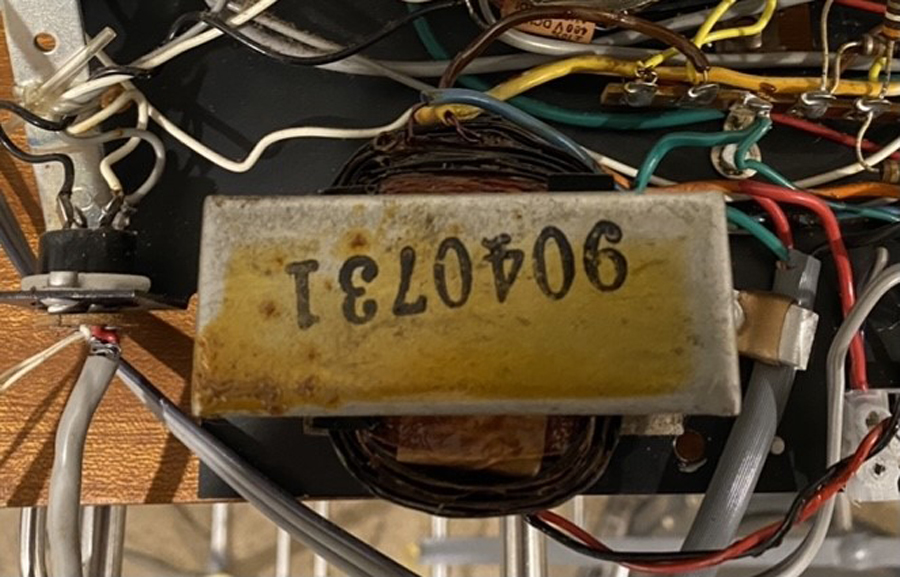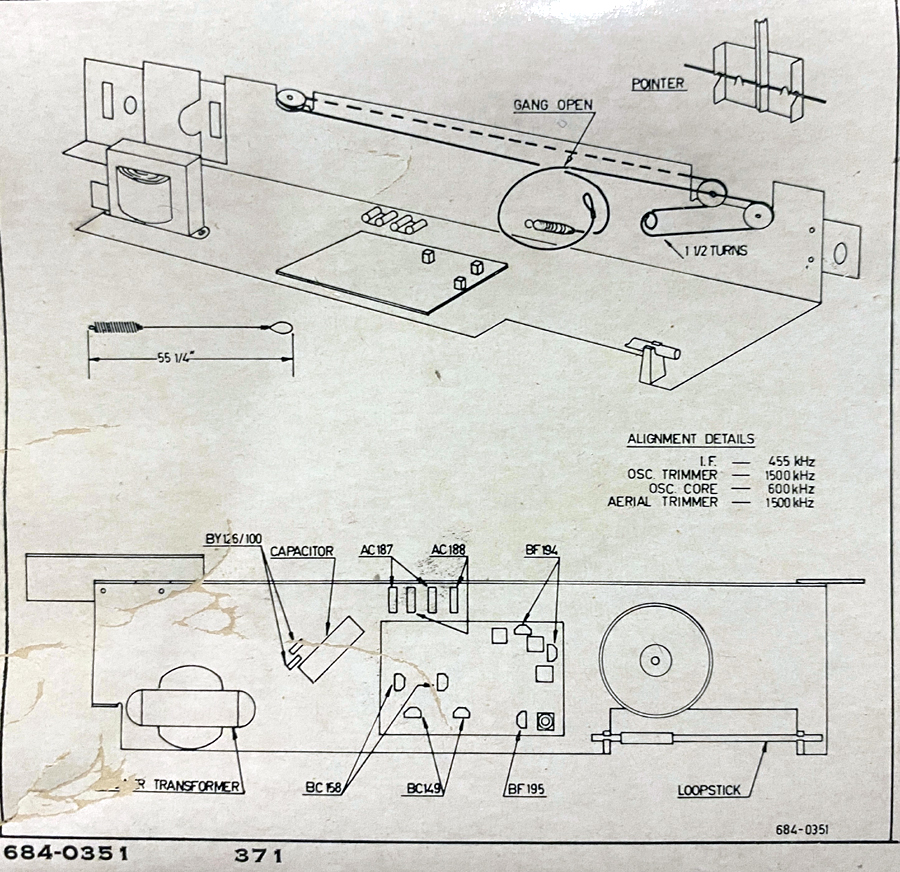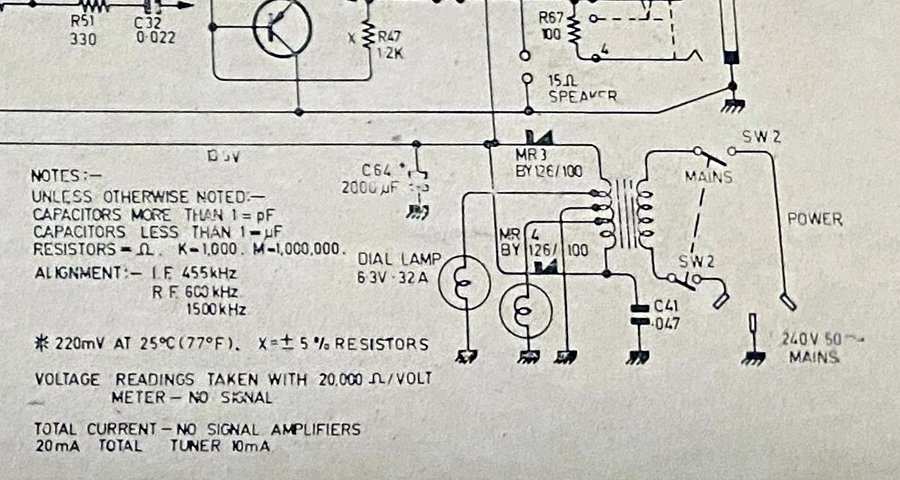Tech Talk
Forum home - Go back to Tech talk
|
H.M.V Power Transformer
|
|
|
« Back ·
1 ·
Next »
|
|
|
Return to top of page · Post #: 1 · Written at 10:10:40 AM on 28 September 2021.
|
|
|
|
Location: Nudgee, QLD
Member since 28 September 2021 Member #: 2463 Postcount: 1 |
|
Hi All,     |
|
|
Return to top of page · Post #: 2 · Written at 12:21:02 PM on 28 September 2021.
|
|
|
|
Location: Hobart, TAS
Member since 31 July 2016 Member #: 1959 Postcount: 581 |
|
Power transformers are generally fairly reliable. |
|
|
Return to top of page · Post #: 3 · Written at 1:00:37 PM on 28 September 2021.
|
|
|
|
Location: Sydney, NSW
Member since 28 January 2011 Member #: 823 Postcount: 6887 |
|
As above, don't attempt work on mains-powered equipment unless you are fully aware of technician safe practices. |
|
|
Return to top of page · Post #: 4 · Written at 11:10:41 PM on 28 September 2021.
|
|
|
|
Location: Wangaratta, VIC
Member since 21 February 2009 Member #: 438 Postcount: 5606 |
|
I would second laying off the transformer and touching any thing until it has been assessed. That is my first step. Powering it to see if it goes, is never the first step. |
|
|
Return to top of page · Post #: 5 · Written at 10:19:53 PM on 29 September 2021.
|
|
|
|
Administrator
Location: Naremburn, NSW
Member since 15 November 2005 Member #: 1 Postcount: 7564 |
|
Photos uploaded. ‾‾‾‾‾‾‾‾‾‾‾‾‾‾‾‾‾‾‾‾‾‾‾‾‾‾‾‾‾‾‾‾‾‾‾‾‾‾‾‾‾‾‾‾‾‾‾‾‾‾‾‾‾‾‾‾‾‾‾‾‾‾‾‾‾‾‾‾ A valve a day keeps the transistor away... |
|
|
Return to top of page · Post #: 6 · Written at 11:02:39 PM on 29 September 2021.
|
|
|
|
Location: Belrose, NSW
Member since 31 December 2015 Member #: 1844 Postcount: 2643 |
|
That's about all the info we need! |
|
|
Return to top of page · Post #: 7 · Written at 11:20:47 PM on 29 September 2021.
|
|
|
|
Location: Hill Top, NSW
Member since 18 September 2015 Member #: 1801 Postcount: 2215 |
|
Before condemning the transformer I'd check the 2 rectifier diodes, then check out the transformer for continuity and voltages. |
|
|
Return to top of page · Post #: 8 · Written at 11:50:31 PM on 29 September 2021.
|
|
|
|
Location: Belrose, NSW
Member since 31 December 2015 Member #: 1844 Postcount: 2643 |
|
If you do need to replace the transformer, the M2165L from Altronics would do the job. |
|
|
Return to top of page · Post #: 9 · Written at 1:09:38 PM on 30 September 2021.
|
|
|
|
Location: Hill Top, NSW
Member since 18 September 2015 Member #: 1801 Postcount: 2215 |
|
On the power supply diagram, to the left of the main filter cap, C64, there's an unreadable voltage written there. |
|
|
Return to top of page · Post #: 10 · Written at 9:28:24 PM on 30 September 2021.
|
|
|
|
Location: Belrose, NSW
Member since 31 December 2015 Member #: 1844 Postcount: 2643 |
|
As I recall that model ran about 20 volts - about the maximum for an AC127 - AC127 germanium complementary pair. |
|
|
« Back ·
1 ·
Next »
|
|
|
You need to be a member to post comments on this forum.
|
|

Sign In

Vintage Radio and Television is proudly brought to you by an era where things were built with pride and made to last.
DISCLAIMER: Valve radios and televisions contain voltages that can deliver lethal shocks. You should not attempt to work on a valve radio or other electrical appliances unless you know exactly what you are doing and have gained some experience with electronics and working around high voltages. The owner, administrators and staff of Vintage Radio & Television will accept no liability for any damage, injury or loss of life that comes as a result of your use or mis-use of information on this website. Please read our Safety Warning before using this website.
WARNING: Under no circumstances should you ever apply power to a vintage radio, television or other electrical appliance you have acquired without first having it checked and serviced by an experienced person. Also, at no time should any appliance be connected to an electricity supply if the power cord is damaged. If in doubt, do not apply power.
Shintara - Keepin' It Real · VileSilencer - Maintain The Rage
